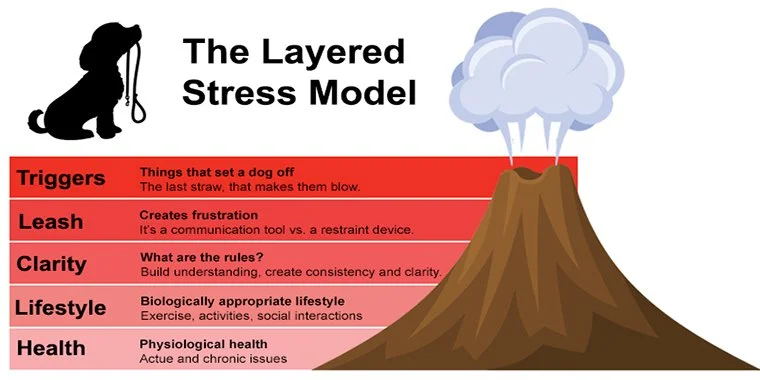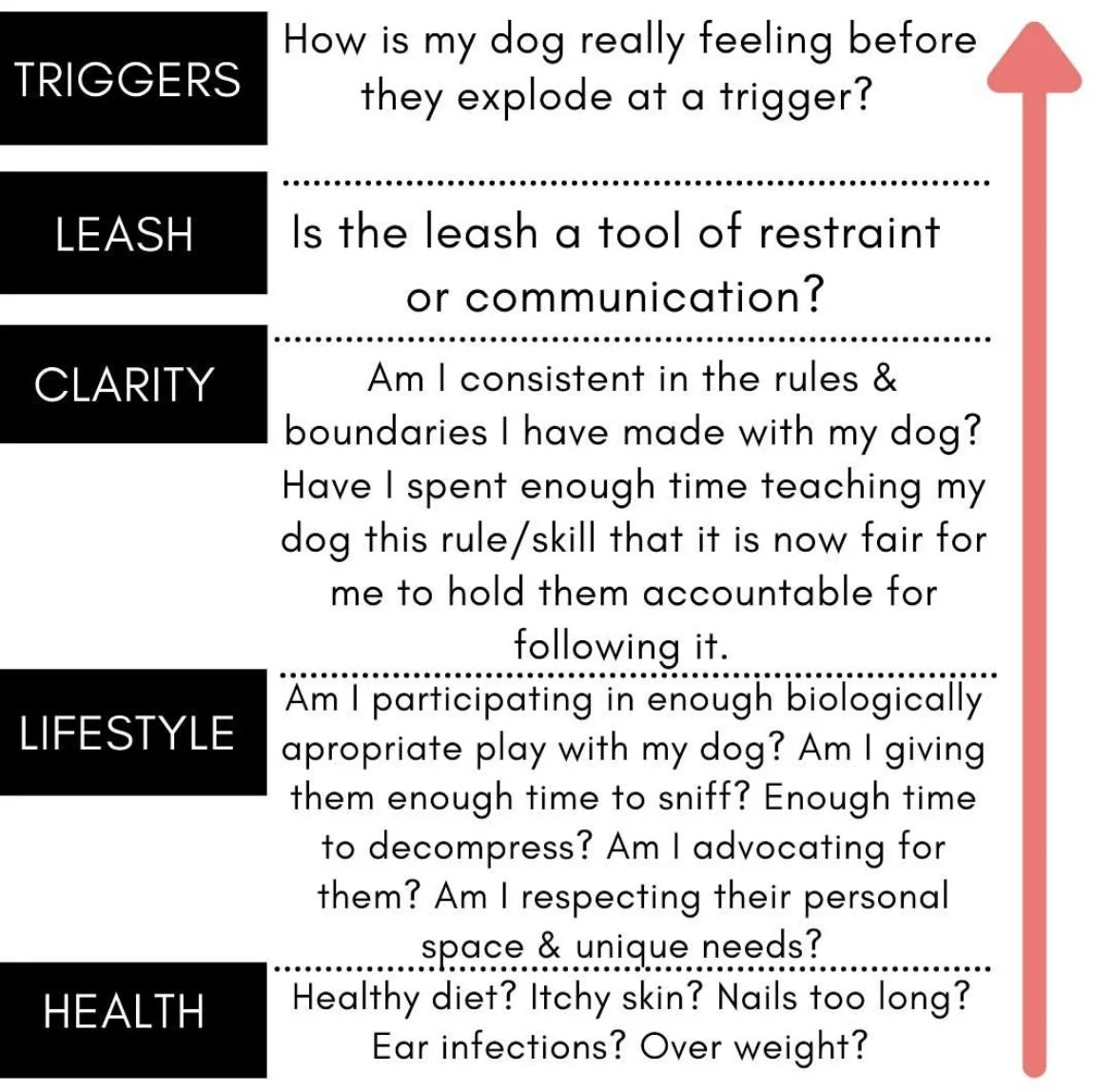Understanding Stress is the Key to Minimizing It
Understanding how to cumulatively manage your dog’s stress is key to addressing reactivity.
Many times when we address a trigger head on, with a reward and/or punishment we end up causing more stress, confusion, and frustration for the dog around that trigger.
I have found that success with reactivity comes from educating the owner on how stress affects the dog's decision making & how the owner's decision making affects the dog’s stress.
Stress is cumulative. If I am eating an unhealthy diet, feel like crap, don’t enjoy my job, don’t exercise, have social interactions that do not validate my feelings and support my mental health I will probably have a short fuse. I will probably struggle with making good decisions, I will definitely not be the best version of myself.
But if I am healthy, biologically, emotionally, and socially fulfilled it will be a lot easier for me to handle stress and challenges in my life. My brain and body will just be happier and healthier.
My version of taking care of my body, setting boundaries, establishing healthy relationships, and changing bad habits won’t look like your process for any of those things because our genes are different and as a result our brains are wired slightly differently.
This is the same for dogs.
We need to understand the fact that many dogs live in highly unnatural situations in which they are exposed to high levels of stress every day. In order to combat that stress and effectively guide them into making better decisions we need to prioritize their health, biological fulfillment, and our relationship with the dog before we address the reactivity.
Featured is a diagram of Chad Mackin’s “Layered Stress Model,” and some questions that I ask myself when I am training a dog using this model.

